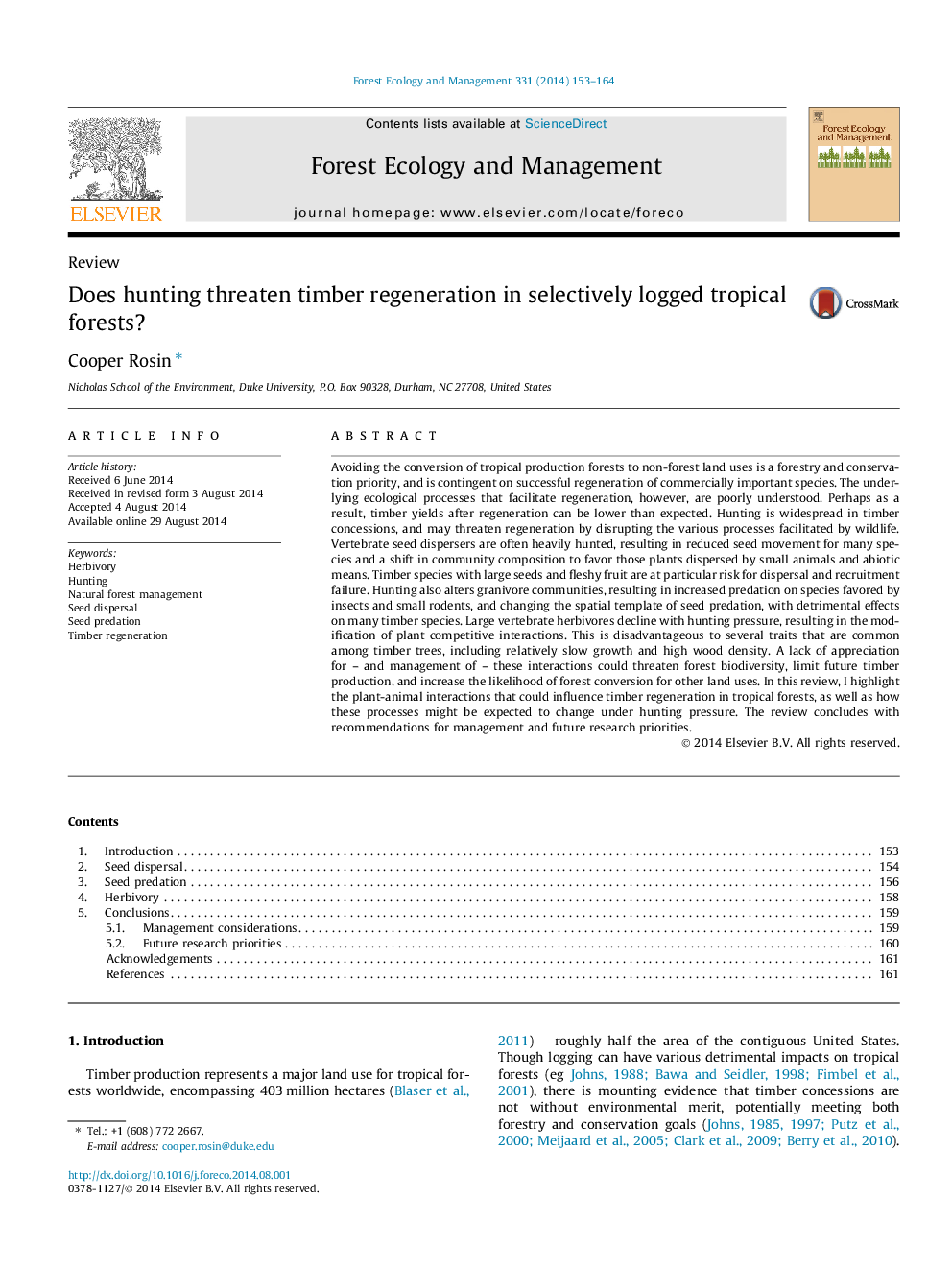| کد مقاله | کد نشریه | سال انتشار | مقاله انگلیسی | نسخه تمام متن |
|---|---|---|---|---|
| 86452 | 159189 | 2014 | 12 صفحه PDF | دانلود رایگان |
• I review the role of plant-animal interactions in tropical timber regeneration.
• I explore patterns in seed dispersal, seed predation, and herbivory of timber trees.
• I detail how these processes might be expected to change under hunting pressure.
• The review concludes with management recommendations and future research priorities.
Avoiding the conversion of tropical production forests to non-forest land uses is a forestry and conservation priority, and is contingent on successful regeneration of commercially important species. The underlying ecological processes that facilitate regeneration, however, are poorly understood. Perhaps as a result, timber yields after regeneration can be lower than expected. Hunting is widespread in timber concessions, and may threaten regeneration by disrupting the various processes facilitated by wildlife. Vertebrate seed dispersers are often heavily hunted, resulting in reduced seed movement for many species and a shift in community composition to favor those plants dispersed by small animals and abiotic means. Timber species with large seeds and fleshy fruit are at particular risk for dispersal and recruitment failure. Hunting also alters granivore communities, resulting in increased predation on species favored by insects and small rodents, and changing the spatial template of seed predation, with detrimental effects on many timber species. Large vertebrate herbivores decline with hunting pressure, resulting in the modification of plant competitive interactions. This is disadvantageous to several traits that are common among timber trees, including relatively slow growth and high wood density. A lack of appreciation for – and management of – these interactions could threaten forest biodiversity, limit future timber production, and increase the likelihood of forest conversion for other land uses. In this review, I highlight the plant-animal interactions that could influence timber regeneration in tropical forests, as well as how these processes might be expected to change under hunting pressure. The review concludes with recommendations for management and future research priorities.
Journal: Forest Ecology and Management - Volume 331, 1 November 2014, Pages 153–164
